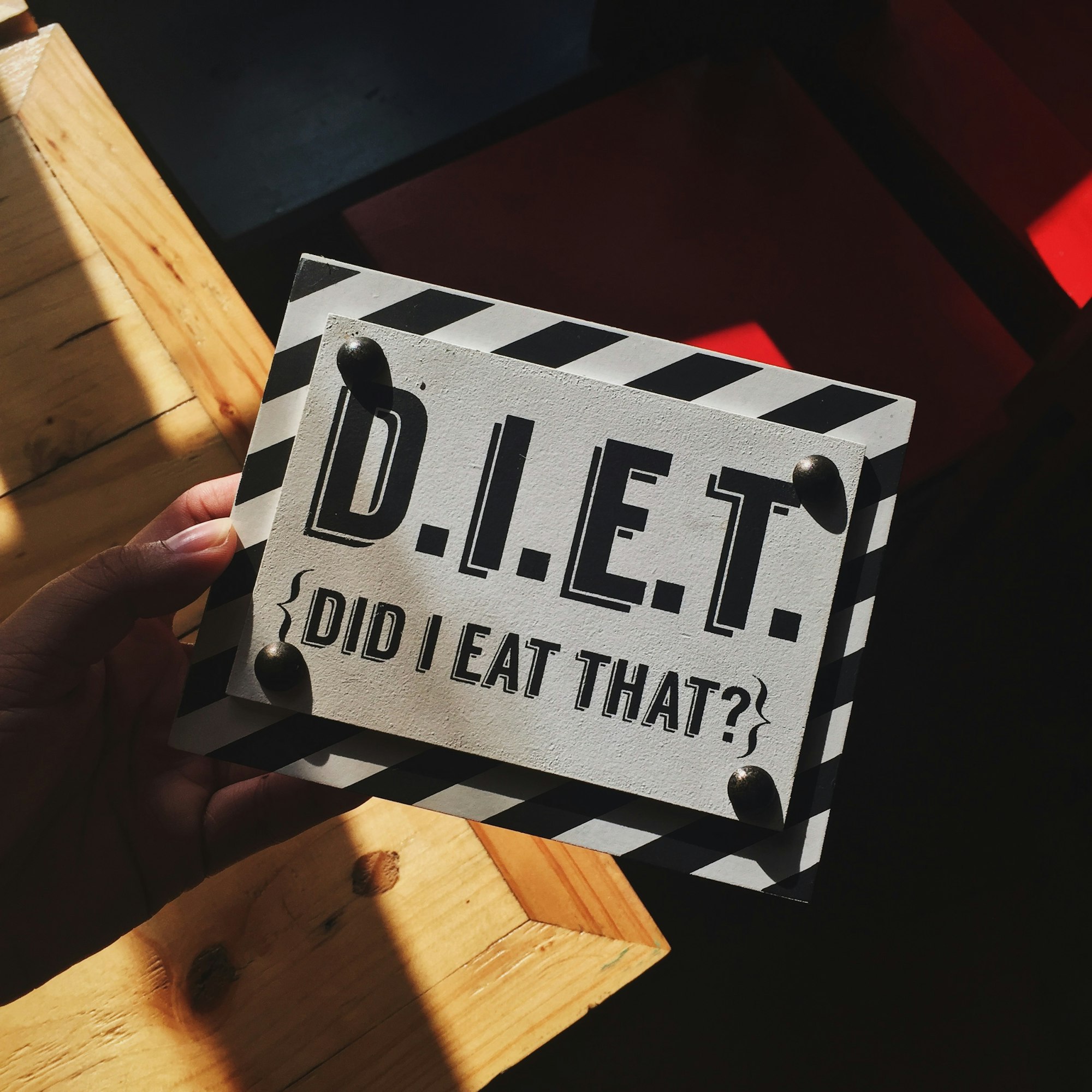Content Summary
The glycemic index (GI) is a valuable tool for individuals with diabetes, providing insight into how different foods can impact blood sugar levels. By understanding the concept of GI and incorporating it into meal planning, individuals with diabetes can make informed dietary choices to better manage their condition.
What is the Glycemic Index?
The glycemic index is a numerical scale that ranks carbohydrates based on their potential to raise blood glucose levels compared to a reference food, typically glucose or white bread, which are assigned a value of 100.
Foods with a high GI are rapidly digested and absorbed, leading to a rapid increase in blood sugar levels. Conversely, foods with a low GI are digested and absorbed more slowly, resulting in a more gradual and sustained rise in blood sugar.
Which Foods Have High Glycemic Index?
High GI foods typically include refined carbohydrates and processed foods. These can include white bread, white rice, sugary cereals, baked goods, and some fruits such as watermelon and pineapple. These foods cause a rapid spike in blood sugar levels, which can be challenging for individuals with diabetes to manage.
Little-Known compound that makes the Glycemic Index of
Wheat is among the highest of ALL Foods
You know how important it is to keep your blood sugar stable...
Rapid blood sugar and insulin spikes promote a cascade of inflammation and oxidation.
Triggering these forces over and over again dramatically increases your risk for cancer, Alzheimer’s, heart disease, fatty liver, diabetes, macular degeneration, physical aging (wrinkles), and more!
And did you know that wheat – including so-called “healthy” whole wheat – spikes your blood sugar more than almost any other food... even when the same number of carbs is consumed?
That's because 75% of the carbohydrates in wheat are in the form of amylopectin A.
This compound is unique because of how rapidly it is transformed to glucose.
According to research published in the American Journal of Clinical Nutrition, eating just two slices of whole wheat bread spikes your blood sugar more than drinking a can of soda, eating a candy bar, or helping yourself to six teaspoons of table sugar!
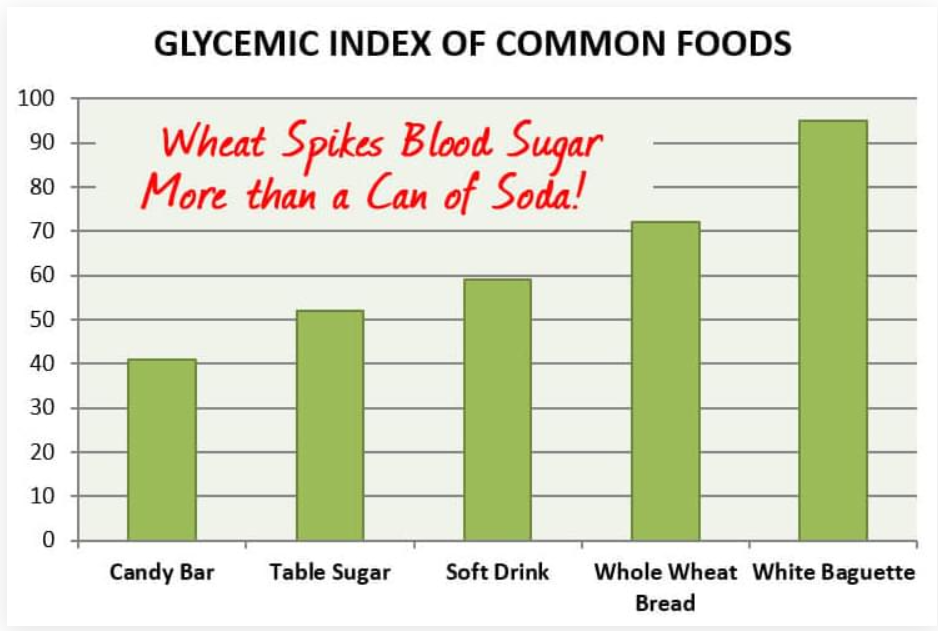
And if the threat of diabetes, heart disease and metabolic syndrome is not enough... the damage traditional bread can do to your gut should make you think long and hard before you butter your next biscuit!
Unfortunately, however, there is a BIG misconception about bread and your gut.
And it has cost millions of people their health and enjoyment in life...
Don’t Be Fooled by this Common and deadly myth about bread... What You Don’t Notice CAN Hurt You!
You’re probably familiar with Celiac Disease. It is the most serious – and often life-threatening – sensitivity to grains that contain gluten.
Many who suffer this condition cannot consume even the slightest speck of wheat without severe digestive pain... and other embarrassing symptoms.
Other illnesses, like Crohn’s and inflammatory bowel disease, also result in debilitating cramping, bloating, and other digestive distress when wheat is consumed.
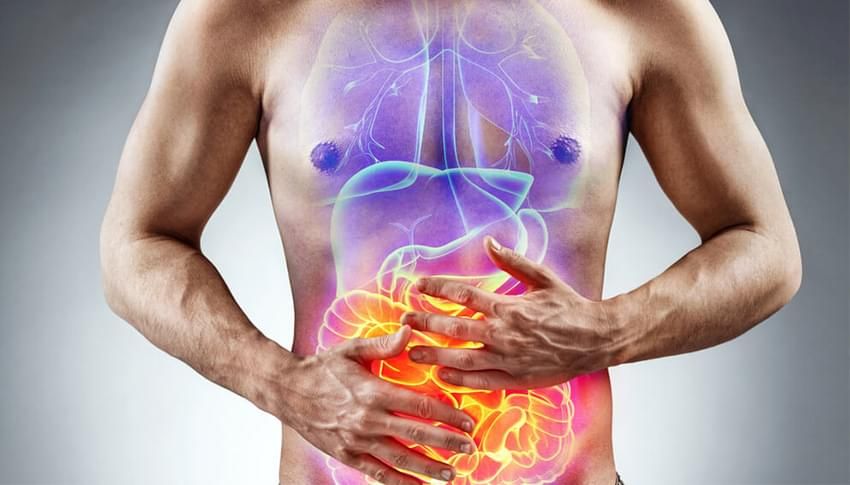
This leads many people to believe that as long as you can eat bread without belly problems – then you must be in the clear... no harm done!
Do not be fooled by this dangerous myth!
Truth is nearly 50% of newly-diagnosed celiac patients have no digestive symptoms!
In other words, half of the people who are EXTREMELY sensitive to wheat can still consume it without the typical "stomach problems".
The bottom line is...
Even if You Can Eat a Three-Foot Submarine Sandwich Without the Slightest Gurgle in Your Tummy... Does NOT Mean it is Not Hurting You!
Even if you feel “just fine” after eating bread, every bite is causing silent damage to your gut – and quietly setting you up for serious disease!
Dr. Alessio Fasano is a professor of medicine and distinguished researcher, with more than 240 peer-reviewed papers to his credit.

His research – in addition to dozens of other scientists around the world – shows that wheat causes chronic gut inflammation. Compounds within it can also do direct damage to every tissue in your body.
Why It’s Nearly IMPOSSIBLE to Burn Fat and Lose Weight When You’re Eating Bread!
You’ve probably heard of insulin as "the fat storage hormone."
When insulin and glucose levels are high-fat storage increases and fat burning stops!

That’s why high-glycemic traditional bread is so effective at making you FAT!
But it gets even WORSE, because...
Studies show that wheat germ agglutinin is a "dead ringer" for insulin.
In fact, a report in The American Journal of Physiology proves that WGA bonds directly to insulin receptors – which increases fat storage and blocks your ability to burn stored fat!
And that’s not the only way this killer compound in bread disrupts your hormonal function...
WGA also blocks the hormone leptin.
Leptin is extremely important when it comes to your appetite and weight. It is the molecule that tells your brain when it’s time to eat... and when you’ve had enough.
Low Glycemic Index Foods:
On the other hand, low-GI foods tend to be higher in fiber and less processed. These include whole grains like quinoa, brown rice, and oats, as well as legumes, non-starchy vegetables, and most fruits. These foods are digested more slowly, leading to a slower and more stable release of glucose into the bloodstream.
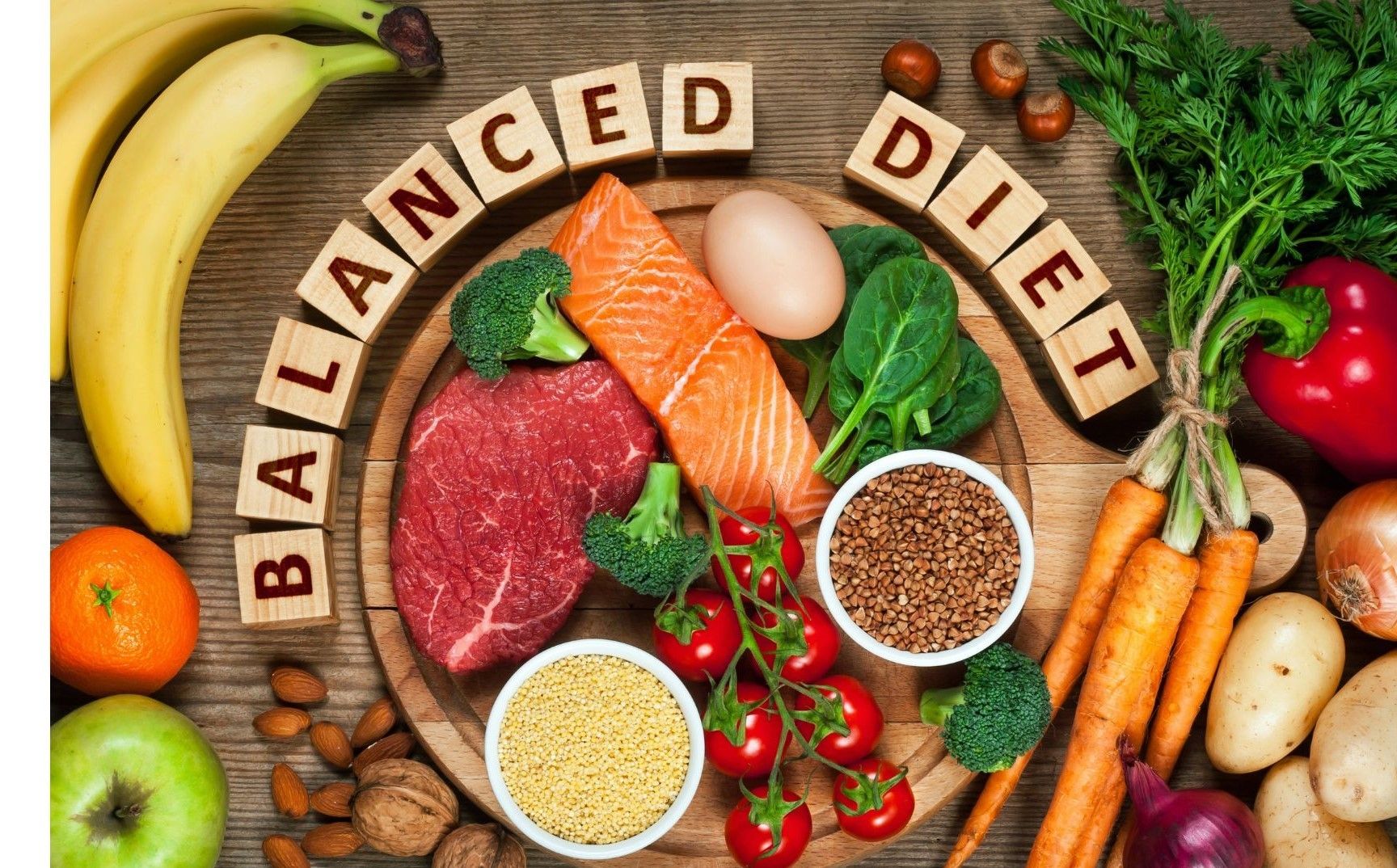
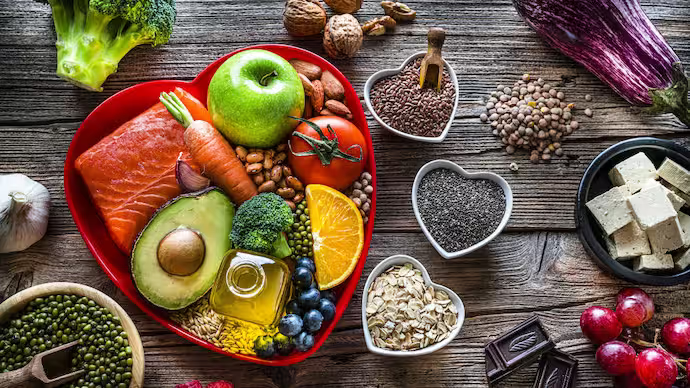
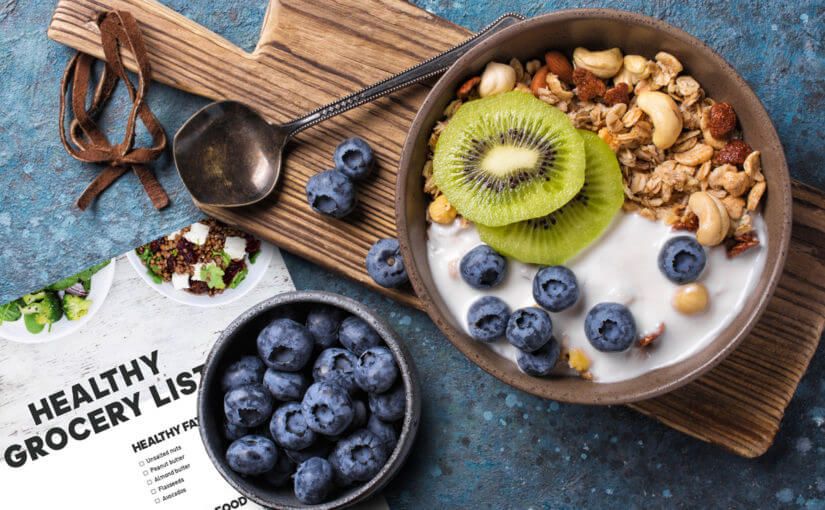
How To Change Your Diet To Include Low GI Foods
When asking yourself how to prevent diabetes or maintain healthy blood sugar levels, focus your attention on three primary elements: weight loss (or maintenance), exercise, and diet modification.
In many cases, simply changing lifestyle habits such as reducing stress levels or increasing physical activity can help someone avoid getting this potentially life-threatening disease.
When it comes to diet changes though, focus on including more low GI foods into your everyday meals such as fruits and vegetables with minimal processing or added ingredients like sweeteners or salt; whole grains instead of processed grains; legumes such as beans; nuts; olives; dairy items such as yogurt; fish instead of red meats; eggs; chicken without skin; olive oil; some red wines; green tea; and dark chocolate (in moderation).
By focusing on consuming low GI foods, individuals with diabetes can help regulate their blood sugar levels and maintain more stable glycemic control. This is especially important for those who need to carefully manage their insulin or medication dosages.
Author's Choice of Healthy Low Glycemic Keto Bread Recipe
Your Guide to Baking Grain-Free, Low-Carb Bread Including 35+ Keto-Friendly Bread Recipes With 5g Net Carbs or Less!
You Don’t Need to be an Experienced Baker to Achieve Superior Results.
Simplify easy recipes. There are no complicated techniques or drawn-out preparation methods. Most of these recipes can be made in just 15-20 minutes of hands-on time!
If you can mix a few ingredients in a bowl... shape the dough into a ball or drop it in a pan... and then slide it into the oven – you can make low glycemic index Keto Breads!
It’s that easy!
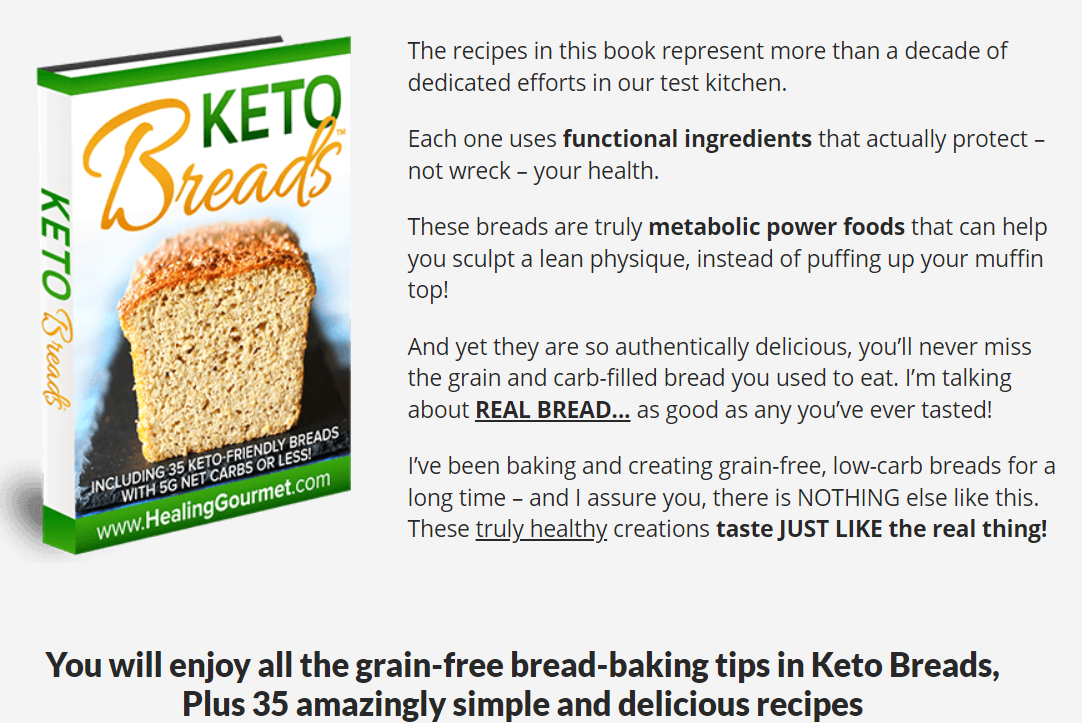
Indulging in Your Favorite Golden Buttery Crusty Bread Can Actually Support Your Success on Low Glycemic and Keto
The great news is that by choosing Keto Breads you can now enjoy all the delicious bread you want – without the harmful effects of grain.
The most common reason why people fail to achieve success on the ketogenic diet or any healthy diet for that matter – is that they are tempted by their favorite comfort foods.

They stick with it for a while...
And then they see a juicy cheeseburger on a soft warm bun... or the waiter brings a basket of buttery rolls to the table... and they cannot control the temptation to have just one bite.
And then another... and another... and another...
It’s HARD to say no to bread... your brain is wired to enjoy it!
But now you can enjoy ALL your favorite breads... 100% guilt free!
These breads can actually help you stay in ketosis – the metabolic state where your body burns fat around the clock!
Thanks to the latest functional ingredients – and a LOT of hard-earned bread-making knowledge – you can eat REAL bread that tastes amazing and is ketogenic too!
With Keto Breads, there will be no temptation to "fall off the keto wagon".

In addition to the GI value, it is also crucial to consider portion sizes and overall nutrient content when making food choices. While some high GI foods can still be consumed in moderation, combining them with low GI foods and incorporating healthy fats, proteins, and fibers can help slow down the digestion and absorption of carbohydrates, further reducing their impact on blood sugar levels.
It is important to note that the glycemic index is not the only factor to consider in diabetes management. Individual responses to different foods can vary, and other factors such as the presence of other nutrients in a meal and individual insulin sensitivity play a role as well.
Conclusion
In conclusion, the glycemic index is useful for individuals with diabetes to understand how different foods can affect blood sugar levels. Individuals can better manage their blood sugar levels by incorporating low GI foods into their diets and support overall diabetes management.
However, it is important to consider the whole diet, portion sizes, and individual needs when making dietary choices for optimal diabetes control.
Be Healthy and Happy!
Relevant Reads>>>


